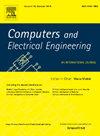Privacy-Preserving Federated Learning with Differentially Private Hyperdimensional Computing
IF 4
3区 计算机科学
Q1 COMPUTER SCIENCE, HARDWARE & ARCHITECTURE
引用次数: 0
Abstract
Federated Learning (FL) has become a key method for preserving data privacy in Internet of Things (IoT) environments, as it trains Machine Learning (ML) models locally while transmitting only model updates. Despite this design, FL remains susceptible to threats such as model inversion and membership inference attacks, which can reveal private training data. Differential Privacy (DP) techniques are often introduced to mitigate these risks, but simply injecting DP noise into black-box ML models can compromise accuracy, particularly in dynamic IoT contexts, where continuous, lifelong learning leads to excessive noise accumulation. To address this challenge, we propose Federated HyperDimensional computing with Privacy-preserving (FedHDPrivacy), an eXplainable Artificial Intelligence (XAI) framework that integrates neuro-symbolic computing and DP. Unlike conventional approaches, FedHDPrivacy actively monitors the cumulative noise across learning rounds and adds only the additional noise required to satisfy privacy constraints. In a real-world application for monitoring manufacturing machining processes, FedHDPrivacy maintains high performance while surpassing standard FL frameworks — Federated Averaging (FedAvg), Federated Proximal (FedProx), Federated Normalized Averaging (FedNova), and Federated Optimization (FedOpt) — by up to 37%. Looking ahead, FedHDPrivacy offers a promising avenue for further enhancements, such as incorporating multimodal data fusion.
差分私有超维计算的隐私保护联邦学习
联邦学习(FL)已经成为保护物联网(IoT)环境中数据隐私的关键方法,因为它在本地训练机器学习(ML)模型,同时只传输模型更新。尽管采用了这种设计,但FL仍然容易受到模型反演和隶属关系推理攻击等威胁的影响,这些威胁可能会泄露私人训练数据。差分隐私(DP)技术通常用于降低这些风险,但简单地将DP噪声注入黑盒ML模型可能会损害准确性,特别是在动态物联网环境中,持续的终身学习会导致过度的噪声积累。为了应对这一挑战,我们提出了带有隐私保护的联邦超维度计算(FedHDPrivacy),这是一种可解释的人工智能(XAI)框架,集成了神经符号计算和DP。与传统方法不同,FedHDPrivacy主动监控学习过程中的累积噪声,并只添加满足隐私约束所需的额外噪声。在监控制造加工过程的实际应用中,FedHDPrivacy在保持高性能的同时,超过了标准的FL框架——联邦平均(FedAvg)、联邦近似(FedProx)、联邦规范化平均(FedNova)和联邦优化(FedOpt)——高达37%。展望未来,FedHDPrivacy为进一步的增强提供了一个有希望的途径,例如合并多模式数据融合。
本文章由计算机程序翻译,如有差异,请以英文原文为准。
求助全文
约1分钟内获得全文
求助全文
来源期刊

Computers & Electrical Engineering
工程技术-工程:电子与电气
CiteScore
9.20
自引率
7.00%
发文量
661
审稿时长
47 days
期刊介绍:
The impact of computers has nowhere been more revolutionary than in electrical engineering. The design, analysis, and operation of electrical and electronic systems are now dominated by computers, a transformation that has been motivated by the natural ease of interface between computers and electrical systems, and the promise of spectacular improvements in speed and efficiency.
Published since 1973, Computers & Electrical Engineering provides rapid publication of topical research into the integration of computer technology and computational techniques with electrical and electronic systems. The journal publishes papers featuring novel implementations of computers and computational techniques in areas like signal and image processing, high-performance computing, parallel processing, and communications. Special attention will be paid to papers describing innovative architectures, algorithms, and software tools.
 求助内容:
求助内容: 应助结果提醒方式:
应助结果提醒方式:


